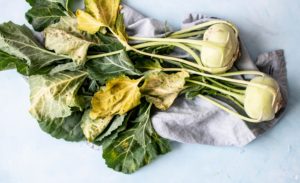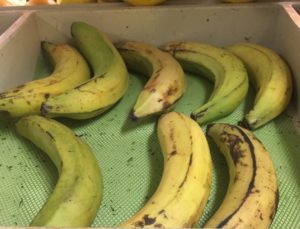If you have read any of my previous blogs, you will see a consistent theme focusing on our responsibility to reduce food waste – one of the most significant contributors to Greenhouse Gas Emissions (GHG). Tips for reducing waste in our kitchen have been the center of the story this month with April being “Winning On Reducing Food Waste Month.” In fact, today, April 24, is “Stop Food Waste Day.” So besides, using leftovers, reducing the amount of fresh produce we buy at one time and altering our preparation practices to include the use of a higher percentage of our food product, what else can we do?

In a recent Huffington Post article, The HuffPost: The Dirty Secret Behind The Perfect Fruits And Vegetables At Your Grocery Store, Food Tank’s co-founder Danielle Nierenberg points out that the demand by retail stores for perfection has increased the mountain of food waste in the fields of growers. How did this start and who is “driving the bus” on this issue?
The article suggests that the rise of refrigeration technology in the 1980s enabled the “fresh picked” fruits and vegetables to be chilled soon after harvesting, and actually all the way to our local grocery stores. This technology allowed the retail industry to expand the search for fresh produce to a broader market, creating a demand for perfection. In doing so, the retail industry has created economic hardship for growers who are left with fields full of “ugly” produce. But consumers shoulder some of the blame as well as demand ultimately drives retail decisions.
This desire for perfection has also spilled over to farmers markets. With the warm weather seasons beginning across the country, our visits to farmers markets increase as does our penchant for “perfect produce.” I, like many of you, am guilty of gravitating toward those stands with beautifully displayed and uniform produce. But is this reality? I know only too well from growing up on a farm that every vegetable is not going to be perfect. In fact, it was always fun to find the unusual shapes and sizes of potatoes and other vegetables. So, have I, too, become a food “snob” without realizing the consequences?
The Consequences of “Perfect”
In recent studies completed by the University of Minnesota and North Carolina State University,1 produce left unharvested due to imperfections, size or overall not meeting appearance standards set by buyers ranged from up to 20% to 42% respectively, signifying that the average “40% food waste percentage” by customers is actually low as the percentage of unharvested produce is uncounted due to lack of data. In a report from a collaborative focused on reducing food loss and waste, the volume estimate of produce remaining on U.S. farms was 4.2 million pounds based on interview estimates from small farms as well as national data on planted acreage that was not harvested.
In the University of Minnesota Beyond Beauty study, exploration of how to use cosmetically imperfect (CI) seconds ranged from creating a market for “seconds” sold as fresh or processed into items like jams or salsas, to donations to food banks and animal feed. Obviously, as consumers we want produce to be free of disease or damage when purchasing it, but are we willing to accept options depending on our use?
The introduction of “ugly produce” in the market place has been tried, but in a recent article I read, success was minimal so the future appears in limbo. For large producer growers, opportunities to move good quality but less attractive produce to processing has diminished in different parts of the country as processing plants have disappeared due to decline in consumer desire for frozen and canned produce.
Be Part of the Solution, Not the Problem

If eating fresh and whole, perhaps a more “perfect” product is desired but if purchasing to slice, dice or sauté, why does it matter? Buying “seconds” at farmers markets or grocery stores usually means you get a reduced-cost product that is ripe and ready to eat at the point of purchase (and often tastier) without losing any of the nutritional value. What is there to lose except less food wasted?
From a community perspective, food rescue programs like Hungry Harvest, based in Baltimore, Maryland, work with growers in their respective areas rescuing imperfect or excess produce and selling it to CSA (community supported agriculture) customers, benefiting both the farmer and consumer. Gleaning programs such as Glean Kentucky “harvest for the hungry” and utilize volunteers to harvest produce that regional growers can’t sell but is still “perfectly” acceptable quality for area food banks and kitchens.
We have no excuse for excess food waste except for our own habits. Use today to start retraining your brain. Be appreciative for the quantity and quality of food available to us…and find ways to share with all. Our preferences do affect the economics across the food value chain.
____________
1. Lisa K. Johnson, Rebecca D. Dunning, J. Dara Bloom, Chris C. Gunter, Michael D. Boyette, Nancy G. Creamer Estimating on-farm food loss at the field level: A methodology and applied case study on a North Carolina farm. Conservation and Recycling, Volume 137, 2018, pp. 243-250.
